Key Points
- The Gila monster, with an average length of 22 inches and a weight of 4 pounds, is smaller than the Komodo dragon, which has an average length of 10 feet and a weight of 300 pounds.
- Gila monsters have neurotoxic venom that is inflicted by chewing, so humans usually don’t fall seriously ill.
- Komodo dragons have venom and bacteria in their bite; the combination of the two will kill a human if not immediately treated.
Komodo dragons are the largest lizards in the world, which makes them instantly recognizable. Yet, another lizard that has attracted significant attention is the Gila monster, a species of lizard that lives in the deserts of the Southwestern United States. The two species of lizards are often discussed because they both have varying levels of venom. Let’s dive into the main differences that separate Komodo dragons from Gila monsters.
The Main Differences Between Gila Monsters and Komodo Dragons
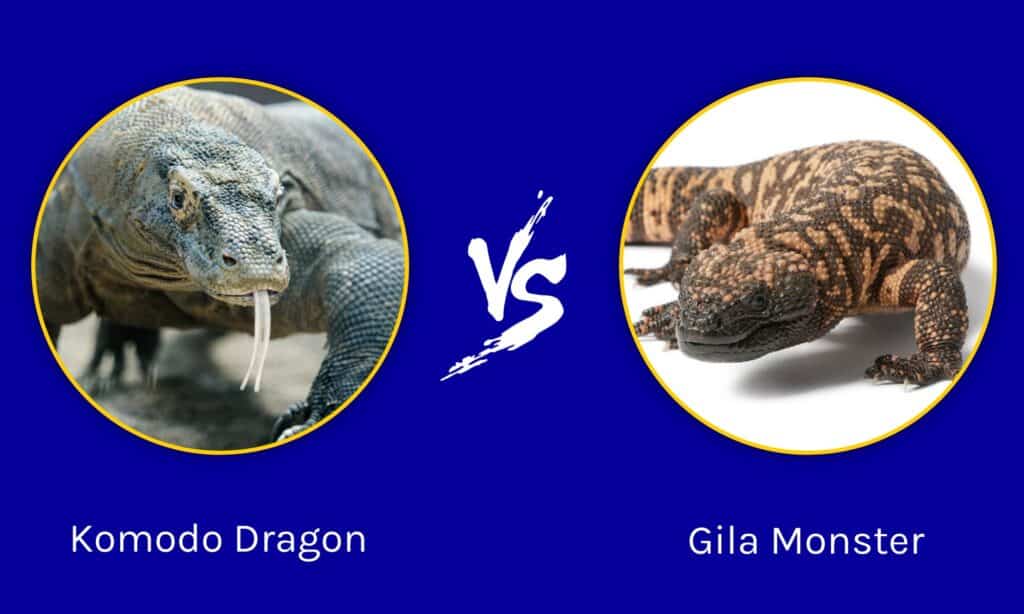
The main difference between Gila monsters and Komodo dragons is their size, venom, and habitats. Komodo dragons are much larger than the Gila monster and are the largest lizard species in the world! While Gila monsters are the largest lizard in the United States, Komodo dragons are significantly and noticeably larger. However, this is only one of the key differences between the two! Let’s explore their main differences in more detail below.
Comparing Gila Monster and Komodo Dragon
| Characteristic | Gila Monster | Komodo Dragon |
|---|---|---|
| Type | Lizard. Scientific Name Helodermatidae | Lizard. Scientific Name Varanus komodoensis |
| Size | 22 inches. 4 pounds | 10 feet. 300 pounds |
| Dangerous | Dangerous to humans | Dangerous to humans |
| Venomous | Venomous bite | Venomous bite, plus deadly bacteria |
| Habitat | Southwest USA and Mexico | Indonesia |
| Lifespan | 20 years | 30 years |
Gila Monsters VS Komodo Dragons: Physical Differences
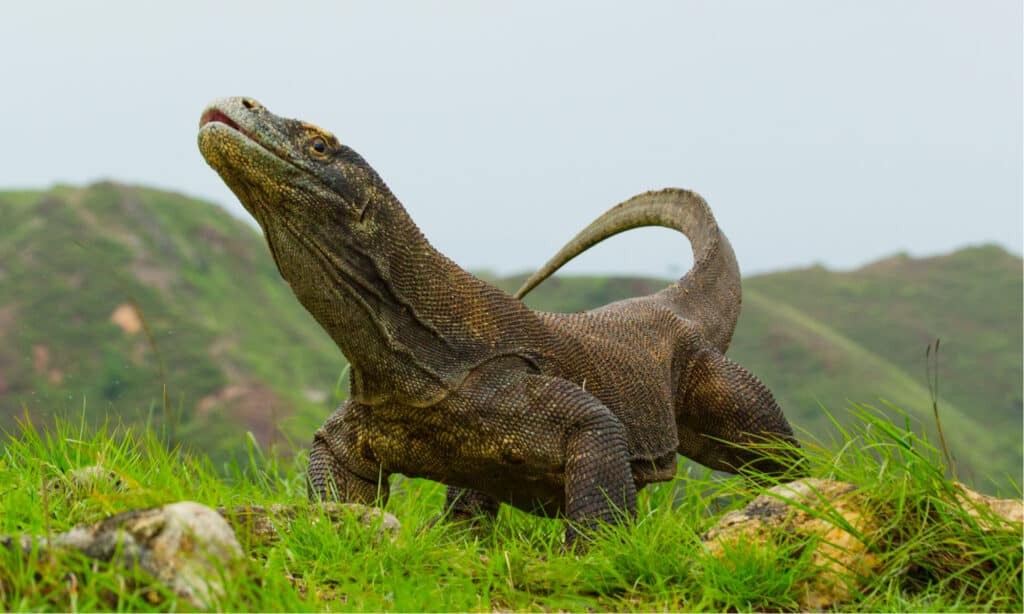
The biggest difference between Gila Monsters and Komodo Dragons is that Komodo Dragons ARE Bigger! Gila monsters are much smaller than the 150 kg Komodo, the largest lizard in the world.
©GUDKOV ANDREY/Shutterstock.com
Apart from the fact that both species are lizards, the Gila Monster and the Komodo Dragon are quite different. Confusing the two would be difficult! Everything from the size of the animal to the colors of their scales sets them apart. While the most prominent difference between the two is the Komodo Dragon’s much larger size, there are many other key physical differences to look for.
Physical Characteristics That Identify Gila Monsters
Gila monsters have an average size of 22 inches long and weigh 4 pounds. While this is large for a lizard, they are smaller than other beaded lizards. The Gila has distinctively patterned scales that have tiny round bones called osteoderms. This is what gives the beaded appearance. Their patterned scales are black, pink, or orange in color over the body and black on the head, feet, neck, chin, and underbelly. These patterns become more complex as the lizard ages.
Physical Characteristics That Identify Komodo Dragons
Komodo Dragons are the largest species of lizard in the world, and their average size is 10 feet long and 300-plus pounds. In fact, the largest Komodo dragon ever recorded weighed 365 pounds!
They have powerful and muscular bodies with large tails that they use to stand upright and fight with. Dragons have small greyish-brown scales that appear more like skin and develop folds around the neck. The head is smaller on average than the rest of the body, with sharp, deadly teeth. Komodo dragons also have long, lethal claws used for digging and occasionally climbing.
Gila Monsters VS Komodo Dragons: Danger To Humans
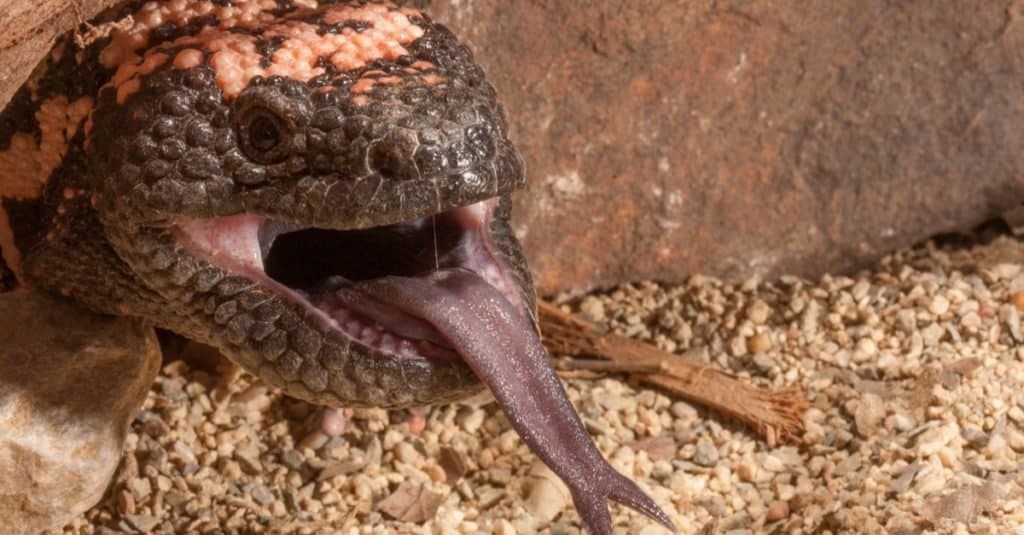
The Gila monster is one of the few venomous lizards, but their bite is rarely fatal. But the Komodo Dragon’s bacteria-filled bite is deadly without immediate treatment.
©K Hanley CHDPhoto/Shutterstock.com
Both species are dangerous and should not be approached in the wild. Both have painful bites containing venom and can cause serious injury. However, these venomous bites differ greatly, and overall, the Komodo dragon is far more formidable than the Gila Monster.
Gila Monsters Have Neurotoxic Venom
While Gila Monsters can inflict serious injury, their bite is not often deadly to humans. Gila monster venom contains a neurotoxin that works similarly to rattlesnake venom. However, since this venom is transmitted through chewing rather than puncturing a vein, the toxin is less effective. For smaller prey, the Gila Monster’s venom is very effective, but against a much larger human, the bite is not fatal.
Despite that, the bite is reported to be extremely painful. Additionally, the Gila is classified as Near Threatened. While contact with a Gila may not result in death to a human, the contact may prove damaging to the Gila!
Komodo Dragons Carry Bacteria And Venom
Komodo Dragons and their danger to humans cannot and should not be dismissed. Known for their status as man-eaters, Komodo Dragons will hunt and kill with impunity. Their large size and speed make them accomplished ambush predators, but it’s their bite that often kills. Dragons carry deadly bacteria in their saliva that combine with venom to deliver a highly dangerous bite. Without immediate treatment, the bacterial infection can and will kill a human.
This bacterial bite, combined with powerful strength, speed, and deadly hunting prowess, make the Komodo dragon not only the largest lizard but possibly the deadliest reptile in the world.
However, while the Gila monster lives across the Southwestern United States and Mexico, the Komodo dragon is found only on a few small islands in Indonesia. So human interactions with Komodo dragons are limited to a small population in a limited area.
Can Their Venom Save Lives?
Recent studies on the Gila Monster and the Komodo Dragon venom may lead to medical breakthroughs! Scientists that are investigating these two lizards have found that the dangerous bite of both lizards may benefit humans. While the benefits of Gila Monster venom are more well-known, recent investigations on Komodo Dragon saliva are also fascinating researchers worldwide!
Gila Monsters and Type 2 Diabetes
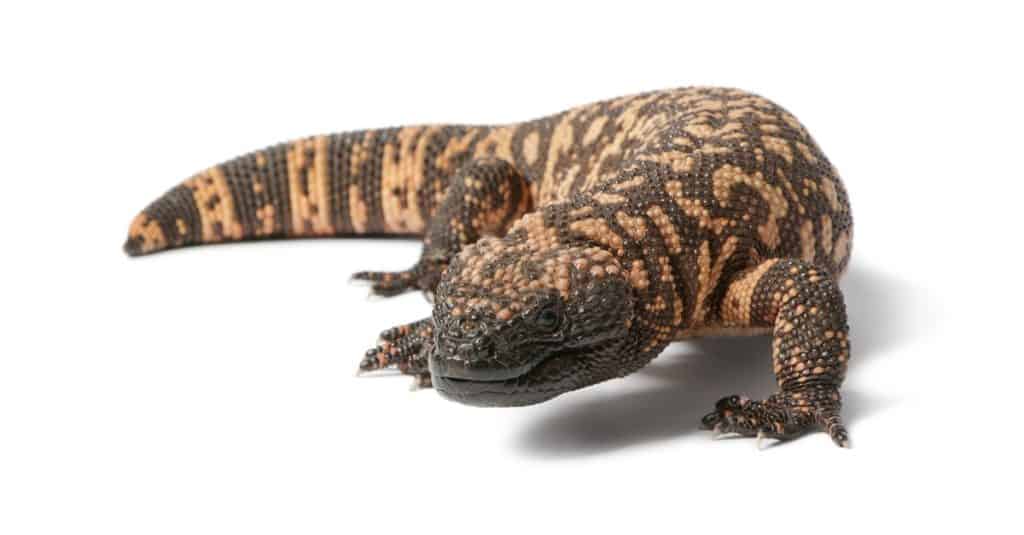
Gila Monster venom contains a hormone that helps insulin production for some individuals with Type 2 Diabetes!
©Eric Isselee/Shutterstock.com
The painful venom contained in the Gila Monsters bite may be useful in regulating Type 2 Diabetes! The hormone Exendin-4 is like the hormone GLP-1 found in humans, which helps insulin production in the pancreas. The discovery of Extendin-4 allowed scientists to create a medicine called exenatide, a synthetic version of the hormone. This medicine helps the body make its own insulin and can help lower insulin dependency!
Komodo Dragons And Antibiotic Support
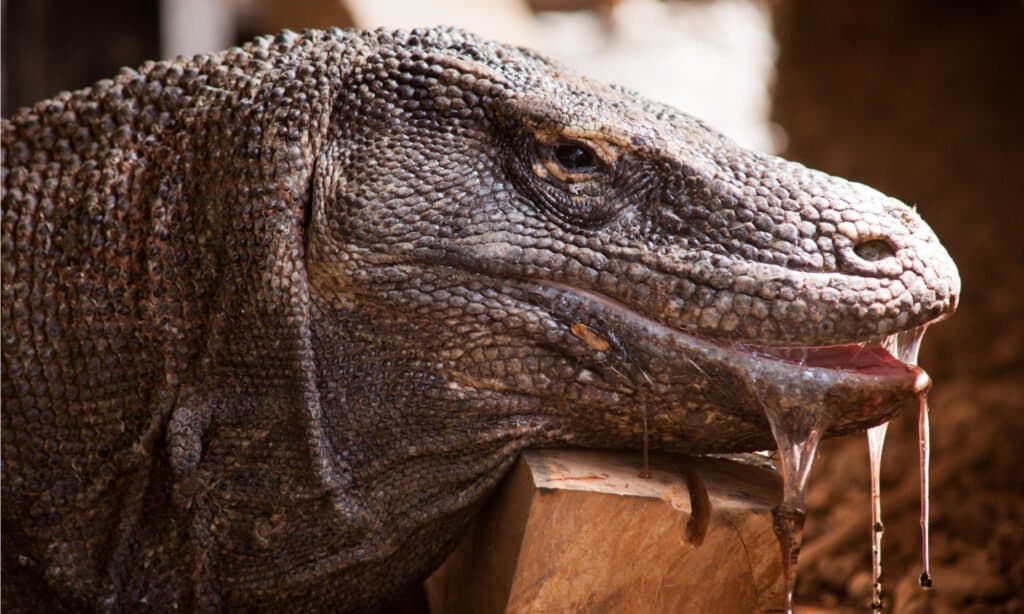
The secret to the Komodo Dragon’s immunity to its own bacteria-laden saliva lies in antimicrobial peptides in their blood. These peptides may be the key to making better and stronger antibiotics!
©Luca Vaime/Shutterstock.com
Studies on the potential health benefits of the Komodo dragon’s natural resistance to its own deadly bacteria are new. Studies of the animal’s blood show this immunity to be caused by antimicrobial peptides or proteins. These proteins are a natural defense against infections found in all living animals. This is a crucial development because many bacteria are becoming resistant to antibiotics. There are over 200 different antimicrobial peptides in Komodo Dragon blood, and these peptides have real potential in the development of stronger antibiotics.
Scientists made their first significant find with DRGN-1, a synthetic version of one peptide. When tested on live bacteria and infected wounds, the wounds healed much faster than wounds treated with conventional methods. While it is still in the developmental stages, researchers are optimistic that this breakthrough will change the future of antibiotics!
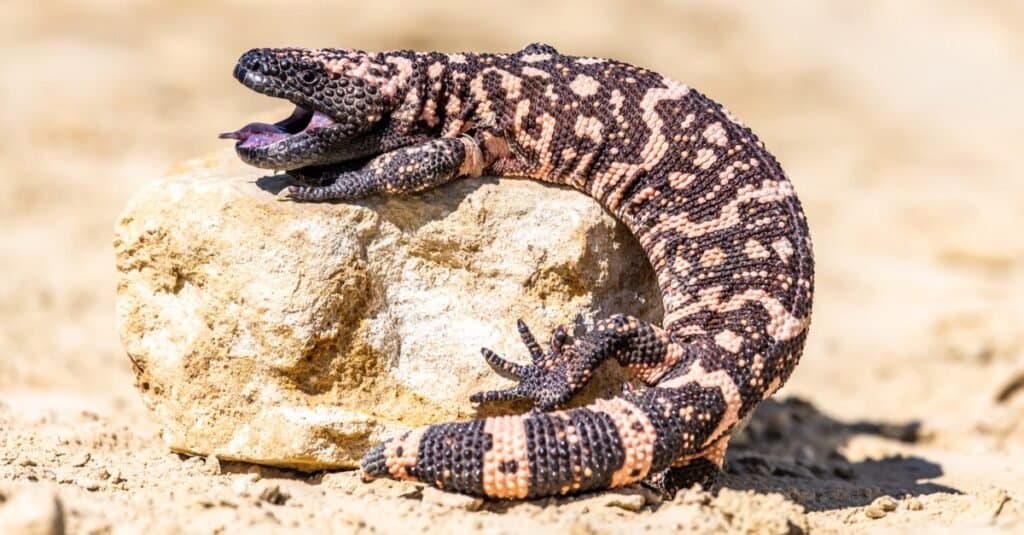
Rather than injecting venom through hollow fangs like venomous snakes, Gila Monsters have enlarged, grooved teeth in their lower jaw.
©Vaclav Sebek/Shutterstock.com
Where Do They Live?
Gila monsters are mainly found in the southwestern United States and northern Mexico. They inhabit arid regions of desert scrub, chaparral, and oak woodland at elevations up to 6,600 ft. Gila Monsters prefer areas with loose soils that allow them to dig burrows for shelter. They spend most of their time underground or hiding under rocks or bushes during the day. At night they come out to search for food such as birds’ eggs, lizards, frogs, and small mammals.
Komodo Dragons can be found on the islands of Indonesia, including Komodo, Rinca, Padar, and Gili Motang. They are known for their large size and ferocious nature. They have been known to hunt down prey as big as a water buffalo! The Komodo Dragon is a carnivore that mainly feeds on small mammals such as deer, wild boar, and monkeys. Their diet also includes birds and carrion when available. In addition to hunting live prey, they are also scavengers who will eat what they find dead in their environment.
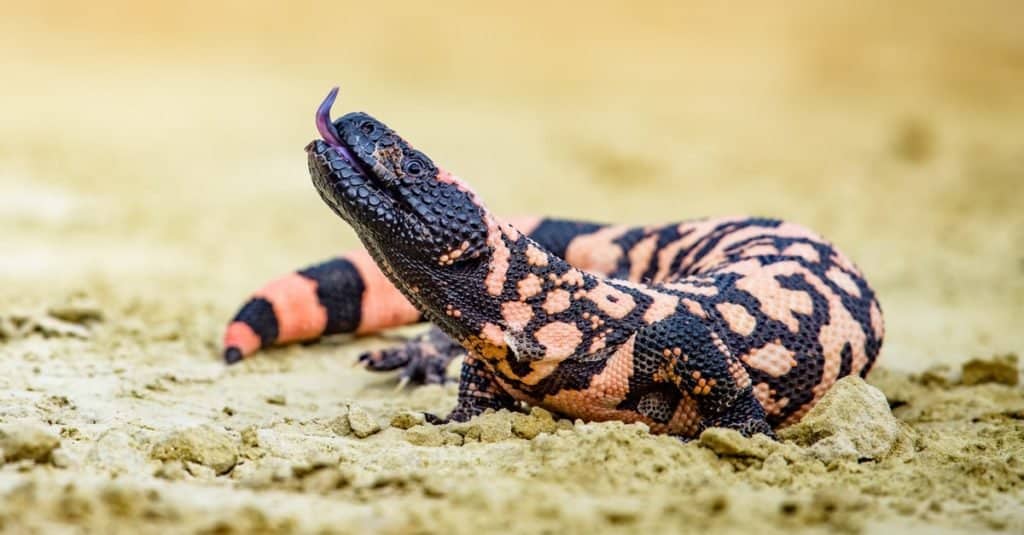
Gila monsters can liver for 20 years in the wild.
©Vaclav Sebek/Shutterstock.com
Lifespan
Which one has the longest lifespan? They actually live about the same amount of years. One factor to consider is whether they are living in the wild or in captivity.
The average Komodo dragon lives for around 30 years. Since one cannot legally own a Komodo dragon, it is unclear how long it would live in captivity.
The Gila monster’s average lifespan in the wild is 20 years. Living in captivity, however, can add ten more years to their lives.
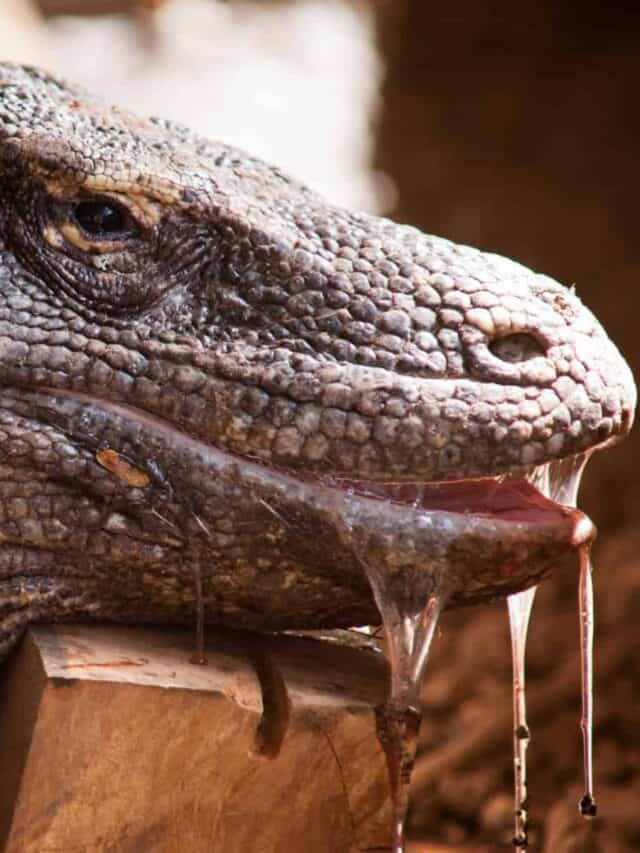
Komodo dragons face extinction due to over-collection for the pet trade.
©Luca Vaime/Shutterstock.com
Threats
The conservation status of Gila monsters and komodo dragons varies depending on the species. The IUCN Red List lists both Komodo dragons and several types of Gila monsters as Vulnerable, while others are listed as Least Concern or Near Threatened.
Komodo dragons face threats from habitat loss due to human development, over-collection for the pet trade, hunting by humans for food or sport, and diseases such as malaria that may have been introduced by people.
Gila monsters also face threats from human activities such as collection for the pet trade, habitat destruction due to land conversion for agricultural use, and road mortality caused by vehicles driving through their habitats. Climate change is also a growing threat to these animals’ survival.
The photo featured at the top of this post is © Sergey Uryadnikov/Shutterstock.com
Thank you for reading! Have some feedback for us? Contact the AZ Animals editorial team.







